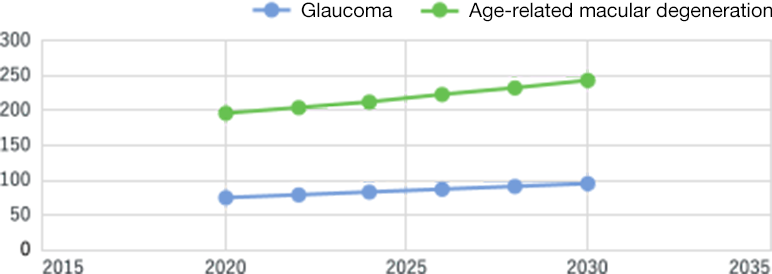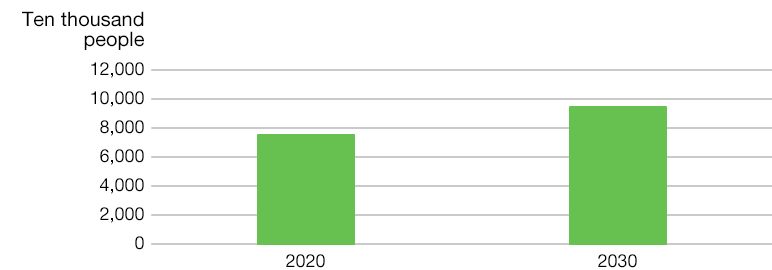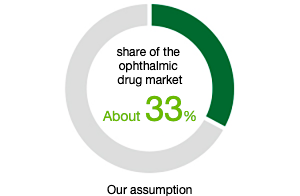Focus on ophthalmology
Ophthalmic drugs are a growing global market
DWTI boasts a compound library that has the potential to be used in developing drugs for various diseases. However, we are strategically focusing on the field of ophthalmology for the following three reasons.
- As the global population ages, the number of patients with eye diseases is increasing rapidly.
- There are few biotech venture companies specializing in the field of ophthalmology.
- It is often possible to develop drugs for ophthalmic diseases more efficiently in terms of time and cost than drugs for other diseases.
The population of patients with ophthalmic diseases is rising worldwide
The number of patients with ophthalmic diseases is on the rise worldwide.
Both glaucoma and age-related macular degeneration, which are common in the Japanese population, are expected to increase by around 4.5%–4.7% annually.

Source: World report on vision
Glaucoma patients predicted to increase about 1.3 times in a decade
Looking at forecasts for the number of glaucoma patients around the world, the patient population is expected to increase about 1.3 times in the 10 years from 2020 to 2030.
In Japan as well, the glaucoma patient population is climbing as the population ages. This trend is expected to continue for the foreseeable future.

Source: World report on vision
Glaucoma drugs have the largest share of the ophthalmic drug market
In Japan, sales of glaucoma drugs are said to account for the largest share—about a third—of the overall ophthalmic drug market. Glaucoma is also the number one cause of adult-onset blindness in Japan, and there is thought to be a large population of potential patients of this disease.
As society ages, the number of patients with retinal diseases such as age-related macular degeneration, diabetic retinopathy, and retinal vein occlusion is projected to increase rapidly. At DWTI, we want to contribute to the well-being of society by advancing research not only into glaucoma but also into other retinal diseases.

